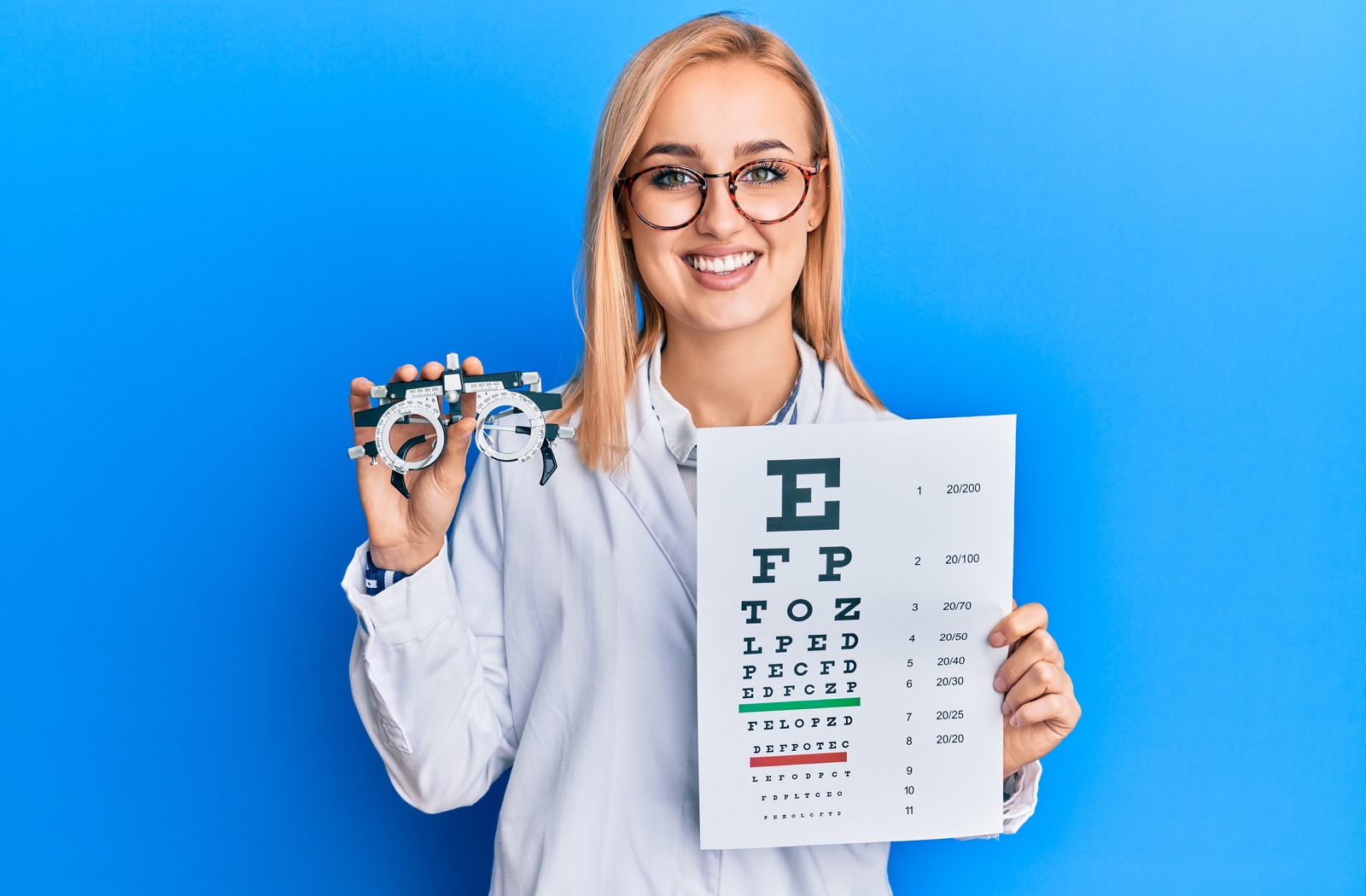Experience Personalized Care with Opticore Optometry in Chino
Experience Personalized Care with Opticore Optometry in Chino
Blog Article
Exploring the most up to date Technical Innovations in Optometry and What They Mean for Optometrists
From the precision of Optical Comprehensibility Tomography to the nuanced understandings offered by AI-driven diagnostic tools, these technologies are establishing new standards in individual evaluation and therapy. As these innovations permeate the practice, optometrists are faced with the obstacle of welcoming these devices to boost patient outcomes.
Developments in Diagnostic Equipment
Progressing the area of optometry, advancements in analysis devices have actually revolutionized the way eye care professionals evaluate and identify visual disabilities and ocular conditions. The past years has actually experienced significant technical improvements, making it possible for even more exact and comprehensive examinations. Optical Comprehensibility Tomography (OCT), as an example, supplies high-resolution cross-sectional pictures of the retina, allowing for the very early discovery of diseases such as glaucoma and age-related macular degeneration. This non-invasive imaging strategy has actually ended up being vital in modern optometric method.
Another trick innovation is the introduction of advanced corneal topography systems, which map the surface curvature of the cornea with accuracy. These tools are specifically helpful for fitting get in touch with lenses and detecting corneal disorders. Electronic retinal imaging has changed traditional ophthalmoscopy, providing in-depth, breathtaking sights of the retina that promote thorough visual evaluations.
The advancement of wavefront aberrometry has likewise been crucial, enabling the analysis of refractive errors with unmatched accuracy (Eye Doctor). This innovation helps in personalizing restorative lenses and improving surgical results for refractive surgical treatments. Collectively, these diagnostic developments empower optometrists to deliver premium patient treatment, making certain very early intervention and tailored treatment approaches, inevitably boosting visual health outcomes
AI in Person Management
Structure on the structure of sophisticated diagnostic tools, the incorporation of artificial knowledge (AI) in person administration represents a transformative leap for optometry. AI systems are significantly used to enhance efficiency, precision, and personalization in patient treatment. By evaluating vast quantities of information, AI can determine patterns and predict possible ocular problems, allowing eye doctors to tailor treatments a lot more efficiently. This capacity is vital in managing persistent eye diseases such as glaucoma and diabetic person retinopathy, where early discovery and continuous tracking are key.
Moreover, AI-driven platforms promote streamlined client communications and management procedures. Automated organizing, online appointments, and customized follow-up strategies not just improve individual fulfillment but likewise enhance time monitoring for specialists. These systems can triage people based on the seriousness of their problems, ensuring that those in vital demand receive timely interest.
In addition, AI improves decision-making by offering eye doctors with evidence-based suggestions and therapy paths. By incorporating information from electronic health records, AI tools use understandings that notify professional choices, reducing the risk of errors and improving client outcomes. As AI remains to develop, its function in client administration will likely broaden, reshaping the landscape of optometric care.
Advancements in Retinal Imaging
In the realm of optometry, retinal imaging has actually seen remarkable technical improvements that are enhancing analysis abilities and patient treatment. Developments such as Optical Coherence Tomography (OCT) and fundus photography have changed exactly how optometrists envision and evaluate the retina.
Enhanced imaging techniques like OCT angiography are further refining analysis accuracy. This non-invasive technique maps blood circulation in the retina, providing critical insights right into vascular health and wellness without the demand for dye shots. Furthermore, adaptive optics innovation is being incorporated into retinal imaging systems to deal with ocular aberrations, providing extraordinary picture quality. Such developments assist in the recognition of minute retinal modifications that could represent condition development.
Additionally, improvements in fabricated intelligence are enhancing retinal imaging by allowing automatic evaluation of huge datasets. These systems assist optometrists in identifying patterns a measure of pathology, therefore enhancing diagnostic accuracy and efficiency. Collectively, these advancements news are changing retinal imaging into a foundation of modern-day eye treatment, enhancing results and broadening restorative opportunities.
Teleoptometry's Expanding Function
Teleoptometry is significantly coming to be an important element of eye care, driven by developments in electronic interaction and analysis devices. This is specifically advantageous in rural and underserved areas where access to specialized eye care is commonly restricted.
The combination of expert system (AI) further boosts teleoptometry, making it possible for the evaluation of visual information and aiding in the detection of ocular conditions such as glaucoma and diabetic person retinopathy. AI-powered formulas can swiftly interpret complicated imaging information, supplying eye doctors with valuable insights that strengthen scientific decision-making.
In addition, teleoptometry sustains connection of care through seamless combination with electronic wellness documents (EHRs), permitting optometrists to preserve comprehensive person histories. This ensures that individuals get personalized and consistent treatment also when seeking advice from with various practitioners.
Despite these advantages, difficulties continue to be, including guaranteeing information security and taking care of client assumptions. However, teleoptometry represents a substantial stride in the direction of more accessible, efficient, and patient-centered eye care. As innovation evolves, its role is poised to increase additionally.

Future Patterns in Eye Care
A myriad of cutting-edge trends is readied to reshape the future of eye treatment, driven by technological improvements and the advancing requirements of people. One considerable trend is the combination of man-made intelligence (AI) in diagnostics, which assures to boost the accuracy and performance of eye evaluations. AI formulas can examine huge quantities of data from retinal images, potentially finding conditions like diabetic person retinopathy and glaucoma earlier than traditional techniques.
Additionally, personalized medication is acquiring traction in optometry, with hereditary screening educating tailored treatment strategies. This technique intends to maximize patient outcomes by customizing interventions to individual hereditary accounts. Wearable innovation, such as smart call lenses, is likewise coming up, using real-time surveillance of intraocular pressure or sugar levels, hence offering continuous insights into eye and systemic health and wellness.
The adoption of enhanced fact (AR) and online truth (VR) in training and patient education and learning is another emerging pattern. These innovations use immersive experiences that can boost understanding and abilities both Check Out Your URL for optometrists and people. As these patterns advance, optometrists need to remain abreast of technological advancements to provide sophisticated treatment, making certain enhanced client results and satisfaction in the dynamic landscape of eye care.
Conclusion

Jointly, these analysis innovations equip optometrists to deliver superior person treatment, guaranteeing early treatment and tailored therapy methods, eventually improving aesthetic health and wellness outcomes.

As these innovations proceed to develop, eye doctors have to adapt and integrate them right into technique, ultimately enhancing process performance and elevating the requirement of eye treatment supplied to people.
Report this page